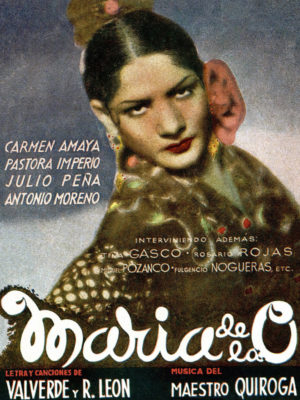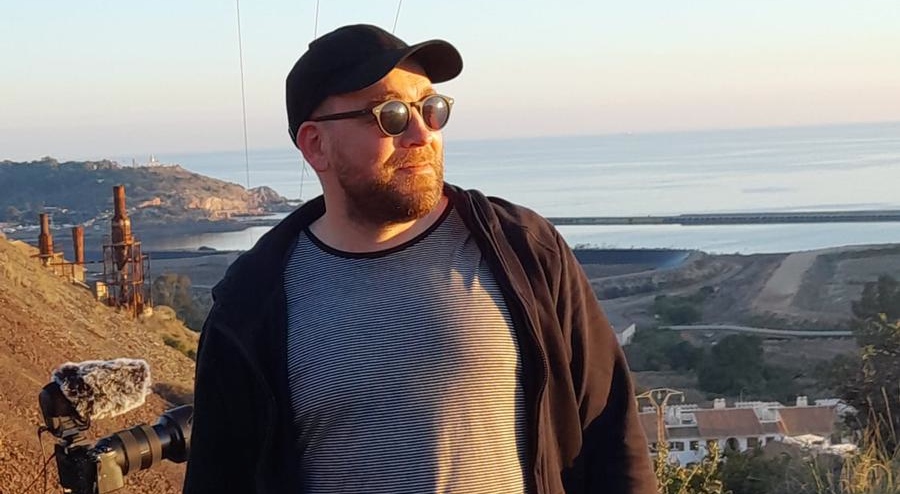Search
To search for an exact match, type the word or phrase you want in quotation marks.
A*DESK has been offering since 2002 contents about criticism and contemporary art. A*DESK has become consolidated thanks to all those who have believed in the project, all those who have followed us, debating, participating and collaborating. Many people have collaborated with A*DESK, and continue to do so. Their efforts, knowledge and belief in the project are what make it grow internationally. At A*DESK we have also generated work for over one hundred professionals in culture, from small collaborations with reviews and classes, to more prolonged and intense collaborations.
At A*DESK we believe in the need for free and universal access to culture and knowledge. We want to carry on being independent, remaining open to more ideas and opinions. If you believe in A*DESK, we need your backing to be able to continue. You can now participate in the project by supporting it. You can choose how much you want to contribute to the project.
You can decide how much you want to bring to the project.

1. Co-existence
It was a decade ago that Claire Bishop wrote about the limitations of the art sphere to name the different activities that take place within it, unlike cinema or performing arts[1]The worlds of music, film, literature, fashion and theatre have a rich vocabulary to describe co- existing authorial positions (director, author, performer, editor, producer, casting agent, sound … Continue reading. In those two areas, the nature of work created in group is always fundamental and constitutive. This has resulted in the recognition of the authorship of the different parties involved, something that is still very difficult to find in artistic practice today. Although some people and institutions make an increasing effort in the recognizition of the work, this problem is still present in most projects, where the piece of art is understood as something in itself while the production process is something separate and subcontracted. In many cases, credits don’t even appear. Without intending to idealize the sphere of cinema or demonize that of art –and being aware that the borders are blurry in many cases–, can the art world borrow structural elements from cinema?
2. Collective/Collaboration
The tendency towards collective production of work is something that has always been present in art (especially in extremely precarious environments), but it has only received attention at the level of historical inscription in recent years[2]It would be necessary to discuss at this point what we understand by contemporary art and from where we understand it. For example, the processes of sound production (with the components of … Continue reading. Of course, we can always find exceptions to this rule, but they would not be part of the general trend. The recognistion of collective work by academic and institutional entitites is something to celebrate. However, especially when it is articulated as a new production and not as historical revision, that recognition comes usually poisoned. In most cases, the collective is understood as the production of a single author, reflected in a particularly problematic way in the fees for the work, as if the production of a group was carried out by just one person. This fact is usually a constant cause of conflicts, both with institutions and within groups. The distribution of roles inevitably generates a hierarchy, but at the same time it can articulate the work in a federative way. A collaborative structure where roles are defined (although they may eventually be interchangeable) allows also for a clearer description in negotiations, both for work with institutions, for internal processes, and for a material redistribution of responsibility. Even in the development of narrative constructions, this collaborative redistribution allows a negotiated composition of the commons. Without doubt, we should not idealize the collaborative over the collective, as it will always be a source of conflict, like any negotiation. If we work from that cautious awareness, we will limit the frustration in the tasks of redistribution. We must always start from active listening processes to try to understand the different positions when making decisions. Could we change from collective modes to collaborative forms, where each contribution is fully recognized? Can we think of ways of working beyond horizontality? How to produce in a federative way?[3] A good example would undoubtedly be documenta fifteen.
3. Maldito Parné
In 1936, “María de la O” was filmed at the Orphea Studios in Barcelona. The director of the film is Francisco Elías Riquelme. He made films under the anarchist conditions of the Popular Front in 1936 and even filmed pieces for the CNT, such as “No quiero, no quiero” in 1938. In 1939, he had to flee into exile. The film “María de la O” was made under the conditions of that moment: all the crew members were paid the same, from the cameraman to the director, twenty pesetas per day[4] RIPOLL SORIA, Xavier, http://www.xtec.cat/~xripoll/hcinec3.htm [accessed 15-09-22). The script was written by Salvador Valverde and Rafael de León, enthusiast supporters of the Second Republic. The plot deals with the life of María de la O, a flamenco artist played by the incomparable Carmen Amaya. The lyrics of the film’s theme song create a very critical reflection on the relationships between emotions and economics. Within the figure of the parné, (a slang word for money) tragedy is condensed. It is in the commodification of the emotional that the lyrics propose in where the personal crumbles. Is itmoney be the only possible form of retribution and redistribution? What other means can we find to name and recognize responsibility and profit beyond symbolic capital?
Today we are witnessing a situation in which numerous parallels can be drawn with the European scenario after the abundant ‘20s and the complex ‘30s. After great financial speculation, the crisis of ‘29 exploded leaving a decade of intense conflicts. At the same time, there were also moments of high social and political experimentation. In the current context, we can clearly see how experiences that are influenced by those times are now being developed. Without doubt, the symbols that crystallized in those moments are symbols that we can reread today. As I finish this text, neo-fascism has assumed the presidency of Italy, through a racist, anti-environmentalist and homophobic coalition. We must compose genealogies that facilitate self-organization in the face of this dense night that is spreading.
4. A Body is Never a Body in Itself
In his legendary “Notes on the Cinematographer,” Robert Bresson used aphorisms to point out how each film constitutes a document of its time[5]BRESSON, Robert, “Notas sobre el cinematógrafo”, Ardora Ediciones, Madrid, 1997., not only because of the fiction it proposes or the people it shows, but also because of the forms with which is made. The mode of production inscribed in the projects we undertake also accounts for the cosmovision we propose. In this sense, films function as ecosystems, on a larger or smaller scale, where a network of relationships always unfolds in a way of instituting. At the same time, it is a medium that from the outset is already positioned as trans-disciplinary: each film project contains exercises in writing, performance, sound, image, rhythms and architecture. In audiovisual productions, the question should not only be what and how something is told, but also whatand howis produced. This awareness can also help us move from a logic of competition to a logic of collaboration in the production of audiovisual narratives. We are slaves to screens and our attention is the first entry point of contemporary alienation. We are at the mercy of constant misinformation; of continuous emotional manipulation; of a perpetual seduction in order for capitalism to follow its phagocytic course. Faced with these ferocious machines of images, we have to find the spaces in which to produce narratives of the commons. In the face of induced polarization, we need to produce empathic spaces that allow us to develop solidarity strategies. In the collapse that is taking place in an increasingly accelerated way, this practice of collaboration, understood from the most fundamental of activities, will be completely inevitable if we manage to position ourselves within mutualaid. The concept of mutualitymust be practiced not only in the structure of the work, but also in the composition of the narratives.
This month of collaborative film making we had the films:
“OUVERTURES” by The Living and The Dead Ensemble
“WORKERS!” by Petra Bauer & SCOT-PEP
“WINDJARRAMERU (THE STEALING C*NT$)” by The Karrabing Film Collective
“DER GELDKOMPLEX (EL COMPLEJO DEL DINERO)” by Juan Rodrigáñez
| ↑1 | The worlds of music, film, literature, fashion and theatre have a rich vocabulary to describe co- existing authorial positions (director, author, performer, editor, producer, casting agent, sound engineer, stylist, photographer), all of which are regarded as essential to the creative realization of a given project. The lack of an equivalent terminology in contemporary visual art has led to a reductive critical framework, underpinned by moral indignation. BISHOP, Claire, “Artificial Hells. Participatory Art and the Politics of Spectatorship”, Verso, London, 2012. |
|---|---|
| ↑2 | It would be necessary to discuss at this point what we understand by contemporary art and from where we understand it. For example, the processes of sound production (with the components of performance, fashion and spaces) could already give us another series of genealogies, but the required length of this editorial text does not allow us to include these reflections. |
| ↑3 | A good example would undoubtedly be documenta fifteen. |
| ↑4 | RIPOLL SORIA, Xavier, http://www.xtec.cat/~xripoll/hcinec3.htm [accessed 15-09-22) |
| ↑5 | BRESSON, Robert, “Notas sobre el cinematógrafo”, Ardora Ediciones, Madrid, 1997. |

Lorenzo Sandoval operates as an artist, filmmaker and curator. His practice spans different disciplines, creating spaces for encounter through his art works, films, architectural pieces and collaborations. He researches on the connections between textiles, computation and image production, in relation with systems of redistribution within the long-term project Shadow Writing which has been featured at IVAM Alcoi (2019) or Kindl in Berlin (2023) among others. With Tono Vizcaíno, they presented “Industria. Matrices, tramas y sonidos” at IVAM in 2021. He was part of “Here History Began. Tracing the Re/Verberations of Halim El-Dabh” at SAVVY Contemporary in 2021 and “Canine Wisdom for the Barking Dog. Exploring the sonic cosmologies of Halim El Dabh” at Dak’art Biennale 2018. Sandoval was part of the Miracle Workers Collective representing Finland in the Venice Biennale 2019. In 2018, started the research for his current film and art project “Aquel Verano del 22”, exploring the connections between mining in La Unión, construction in La Manga and agroindustry in Mar Menor, in relation to the rights of nature. Since 2023 Sandoval and Zineb Achoubie are developing the project “The Book of Threads”. In 2015, he founded The Institute for Endotic Research (TIER).
www.lorenzosandoval.net
www.theinstituteforendoticresearch.org
"A desk is a dangerous place from which to watch the world" (John Le Carré)